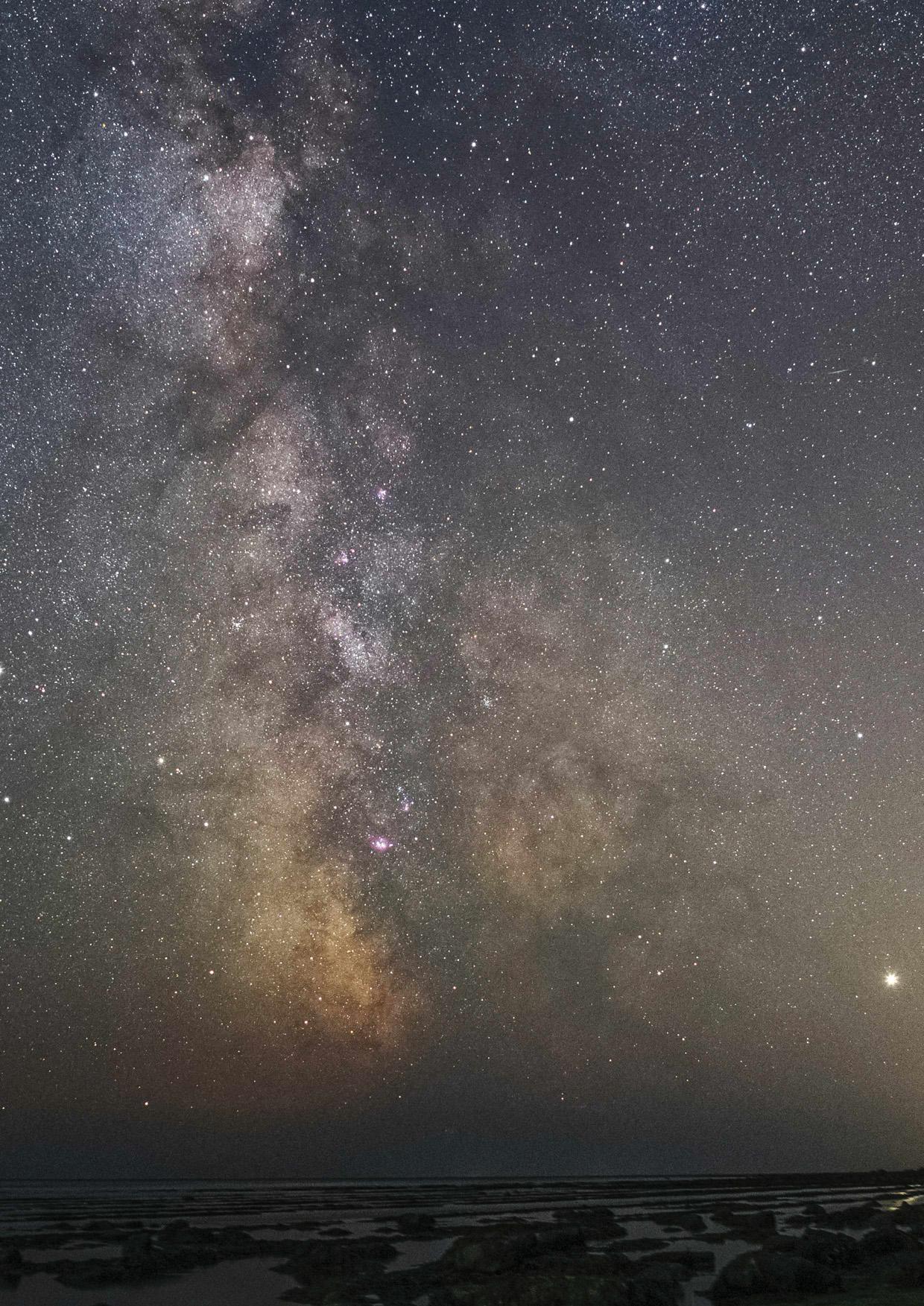
As the lighter nights begin to swing around in May, one thing I like to do is fire up Stellarium and plan out all the things I want to photograph when proper darkness returns in the late summer. Almost always, the target that occupies me the most, no matter how many times I've imaged it, is the Milky Way. Widefield, nightscape or long-focal-length close-up - it doesn't matter what format we're talking about, there's always something our Galaxy can offer.
It's important to think ahead when it comes to Milky Way imaging. The view changes from month to month, week to week and even hour to hour throughout the night. And the best time to photograph our Galaxy from the UK, in my opinion, is the first weeks of August. Not only has astronomical darkness come back for most of us in the UK by that point, but you also don't have to wait all night for the band of the Milky Way to be positioned close to the meridian. Plus, from a composition perspective I love how the core of the Galaxy and the swathe of its spiral arms, arcing up into the eastern sky, are positioned as midnight approaches.
If you've never dipped your toes into the waters of Milky Way astrophotography, now's the perfect time to get prepped for this season. So read on as we introduce you to shooting the spectacular celestial metropolis that we all call home.
Use the right kit
You can achieve spectacular images even with a fairly modest setup
One of the really nice things about photographing the Milky Way is that there are lots of ways to do it, with lots of different types, and levels, of equipment. This means it's one of those targets that you can start off imaging as a beginner and keep coming back to year after year as you get more experience, often finding new and different ways of doing things as you do.
この記事は BBC Sky at Night Magazine の May 2023 版に掲載されています。
7 日間の Magzter GOLD 無料トライアルを開始して、何千もの厳選されたプレミアム ストーリー、9,000 以上の雑誌や新聞にアクセスしてください。
すでに購読者です ? サインイン
この記事は BBC Sky at Night Magazine の May 2023 版に掲載されています。
7 日間の Magzter GOLD 無料トライアルを開始して、何千もの厳選されたプレミアム ストーリー、9,000 以上の雑誌や新聞にアクセスしてください。
すでに購読者です? サインイン

Could We Find Aliens by Looking for Their Solar Panels?- Designed to reflect ultraviolet and infrared, the panels have a unique fingerprint
Researchers searching for life beyond Earth spend a lot of time thinking about what telltale signs might be detectable astronomically. Forms of unambiguous evidence for the presence of life on another world are known as biosignatures. By extension, techno signatures are indicators of activity by intelligent, civilisation-building life.

Antimatter- In our continuing series, Govert Schilling looks at antimatter, the strange counterpart to most of the matter filling our Universe
Particles and corresponding antiparticles are very much alike, except they have opposite electrical charges. For instance, the antiparticle of the electron - known as the positron - has the same tiny mass, but while electrons carry a negative electrical charge, positrons are positively charged.

Where Have All The Milky Way's Early Stars Gone?- Our Galaxy has a curious lack of pristine stars
The Big Bang produced a Universe filled almost exclusively with hydrogen and helium; all other elements - what astronomers call metals - were produced by stars, supernovae and everything that happens later. So if you can pick out a pristine star with no metals polluting it from among the billions in the Milky Way, then you are likely to have a star dating from our Galaxy's earliest days.

Inside The Sky At Night - Two years ago, exoplanet scientist Hannah Wakeford received some of the first data from the JWST
Two years ago, exoplanet scientist Hannah Wakeford received some of the first data from the JWST. In July's Sky at Night, we discovered what she's learned since then.

How to stack DSLR data in Siril
Easily combine multiple frames to boost detailin your astro photos

Lunar occultation of Saturn
You'll need to strike a balance on 21 August to capture the Moon covering the ringed planet

How to plot a variable star light curve
A rewarding project to chart stars that change brightness

Smartphone photography with a telescope
Mary Mcintyre explains how to get impressive night-sky images using your phone

Once-a-century solar storm is overdue
If a Carrington Event struck today it would be catastrophic, says Minna Palmroth

The new era of human spaceflight
There's been a step-change in crewed space missions since the dawn of the 21st century. Ben Evans charts its course and looks ahead to future horizons